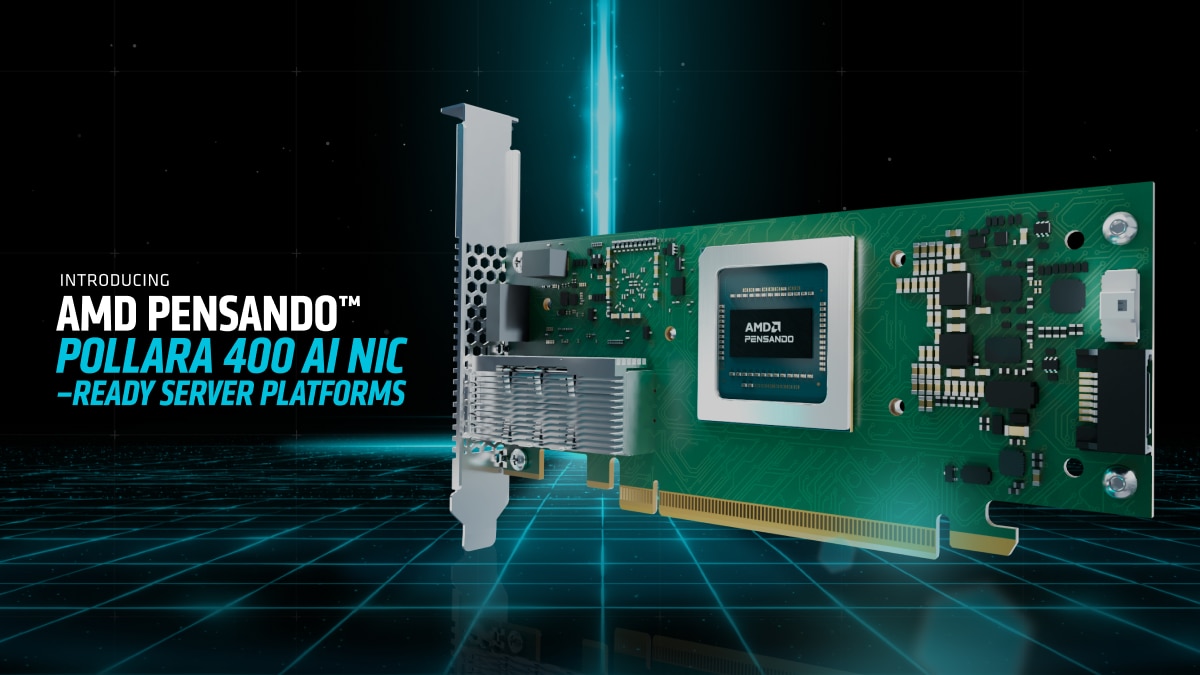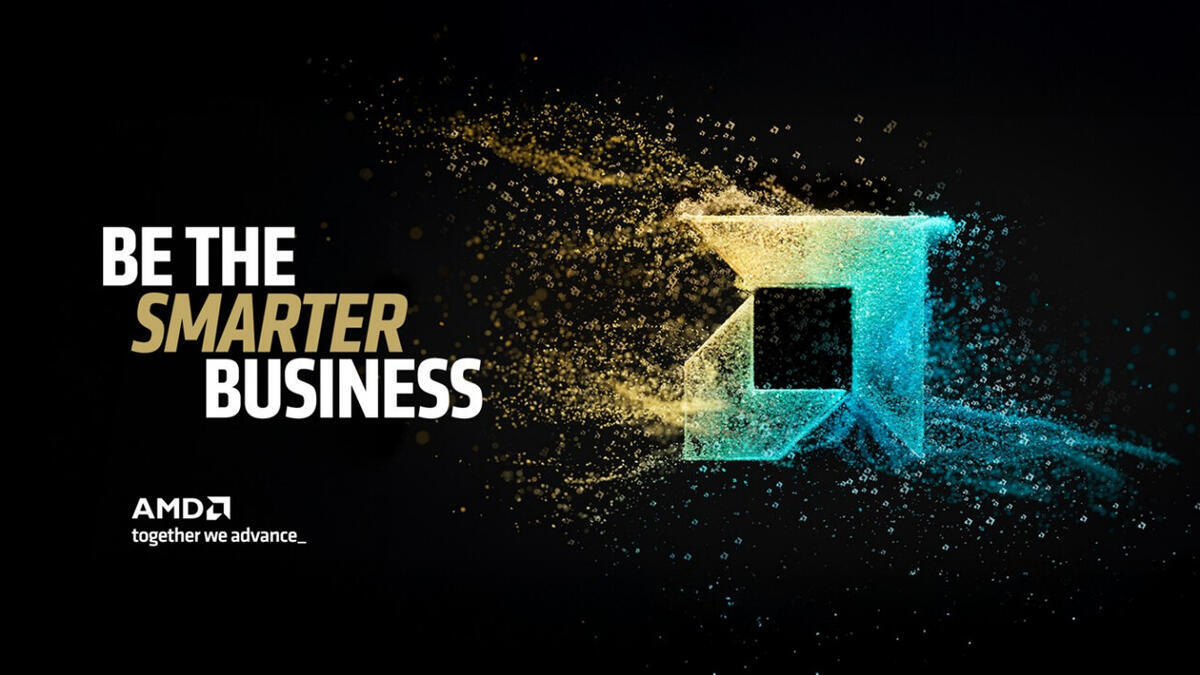Driving Virtualization Forward: The Power of AMD and HPE Morpheus VM Essentials
Jun 25, 2025

At a glance
- Performance and Efficiency Leadership: AMD EPYC™ processors paired with HPE Morpheus VM Essentials deliver impressive workload performance and energy efficiency.
- Simplified, Cost-Effective Virtualization: HPE Morpheus VM Essentials offers transparent per-socket licensing—helping organizations avoid escalating costs from traditional hypervisors.
- Future-Ready Scalability: Customers can start with an optimized VM solution and seamlessly expand to full hybrid cloud orchestration and Kubernetes integration through HPE Morpheus Enterprise—powered by highly performant AMD EPYC processors.
As organizations rethink infrastructure virtualization, many are facing steep licensing changes and limited flexibility. These shifts are prompting IT leaders to explore new solutions that can lower cost, reduce complexity, and future-proof operations.
Together, AMD EPYC processors and HPE Morpheus VM Essentials offer a compelling response. This collaboration delivers leadership VM performance, streamlined
Smarter Virtualization for a Changing Landscape
Legacy virtualization stacks are becoming increasingly cost-prohibitive. New pricing models based on per-core licensing and bundled offerings have changed the economics, especially for customers with dense VM deployments. In response, enterprises are seeking open, modular alternatives with transparent pricing and flexible deployment options.
HPE Morpheus VM Essentials meets these needs with:
- Per-socket licensing that avoids the growing costs of per-core models
- Unified cluster management across HPE and VMware® infrastructure
- Enterprise-grade capabilities like high availability, live migration, and disaster recovery
- Streamlined upgrade path to HPE Morpheus Enterprise for multi-cloud, Kubernetes, and advanced FinOps orchestration
AMD EPYC and HPE VM Essentials: Virtualization Without Compromise
Powered by 5th Gen AMD EPYC processors, HPE Morpheus VM Essentials unlocks powerful advantages for virtualization at scale. Whether the goal is optimizing VM density, reducing server count, or minimizing power consumption, this platform combination sets a new standard for efficiency.
Performance and Efficiency Gains
Independent testing by Infobell IT revealed significant benefits using AMD EPYC with HPE Morpheus VM Essentials:
- Up to 1.4x higher performance in Server side Java® multi-instance max for a system powered by dual EPYC 9575F CPUs compared to a system powered by two 64-core Intel Xeon CPUs1
- 2x more transactions per minute in MySQL TPC-C derivative workloads for a system powered by dual EPYC 9575F CPUs compared to a system powered by two 64-core Intel Xeon CPUs2
- Up to 74% better integer performance per server in 32-core deployments3
- ~40% fewer servers required to meet SPECrate®2017_int_base targets3
- Up to 28% reduction in 5-year TCO and up to 27% less power use3, 1
Scaling Without Limits
With VM Essentials, organizations can run more VMs on fewer servers, thanks to the leadership scalability and core density of AMD EPYC CPUs. Infobell’s benchmarks showed that AMD EPYC 9745 CPU-based systems could support 2x the VM density1 of comparable Intel configurations, while delivering consistently superior throughput and latency performance across industry-standard workloads.
This scalable foundation also simplifies future growth. Customers can start with HPE Morpheus VM Essentials and expand to HPE Morpheus Enterprise, unlocking support for public cloud platforms, Kubernetes (K8s), and advanced orchestration.
Virtualization That Works Smarter, Not Harder
In today’s hybrid and multi-cloud world, businesses need virtualization platforms that are efficient, adaptable, and cost-effective. The combination of AMD EPYC processors and HPE Morpheus VM Essentials gives you the opportunity to:
- Reduce licensing and power costs
- Consolidate infrastructure with fewer, more powerful servers
- Simplify operations and unlock cloud-ready flexibility
Together, AMD and HPE are redefining what modern virtualization should look like.
Learn more about AMD EPYC processors and explore how we’re powering the next era of virtualized infrastructure.
Endnotes
- 9xx5-178 - Source: White Paper https://infobellit.com/BlueBookSeries/IBPE-HPE-VME-2025-1022.html. Testing performed by Infobellit. AMD has not independently validated these results.
- 9xx5-180 - Source: White Paper https://infobellit.com/BlueBookSeries/IBPE-HPE-VME-2025-1022.html. MySQL TPC-C is derived from the TPC-C benchmark and as such is not comparable to published TPC-C results, as the test results do not comply with the TPC-C Specification. Testing performed by Infobellit. AMD has not independently validated these results. TPC, TPC Benchmark and TPC-C are trademarks of Transaction Processing Performance Council.
- 9xx5TCO-012: This scenario contains many assumptions and estimates and, while based on AMD internal research and best approximations, should be considered an example for information purposes only, and not used as a basis for decision making over actual testing. The AMD Server & Greenhouse Gas Emissions TCO (total cost of ownership) Estimator Tool - version 1.42, compares the selected AMD EPYC™ and Intel® Xeon® CPU based server solutions required to deliver a TOTAL_PERFORMANCE of ~16740 units of SPECrate®2017_int_base performance as of April 23, 2025. This analysis compares a 2P 32 core AMD EPYC_9355 Server with a SPECrate2017_int_base score of 969, https://spec.org/cpu2017/results/res2024q4/cpu2017-20241104-45168.pdf; compared to a 2P 32 core Intel Gold_6530 Server with a SPECrate2017_int_base score of 558,
https://spec.org/cpu2017/results/res2024q2/cpu2017-20240408-42740.pdf
SPEC®, SPECrate® and SPEC CPU® are registered trademarks of the Standard Performance Evaluation Corporation. See www.spec.org for more information.
HPE VM Essentials is a trademark of the Hewlett Packard Enterprise Corporation. See www.hpe.com for more information.
For additional details, see https://www.amd.com/en/claims/epyc.html#q=9xx5TCO-012. - 9xx5TCO-013: This scenario contains many assumptions and estimates and, while based on AMD internal research and best approximations, should be considered an example for information purposes only, and not used as a basis for decision making over actual testing. The AMD Server & Greenhouse Gas Emissions TCO (total cost of ownership) Estimator Tool - version 1.42, compares the selected AMD EPYC™ and Intel® Xeon® CPU based server solutions required to deliver a TOTAL_PERFORMANCE of ~16740 units of SPECrate®2017_int_base performance as of April 23, 2025. This analysis compares a 2P 16 core AMD EPYC_9115 Server with a SPECrate2017_int_base score of 445,
https://spec.org/cpu2017/results/res2025q1/cpu2017-20250224-46606.pdf;
compared to a 2P 16 core Intel Silver_4514Y Server with a SPECrate2017_int_base score of 273,
https://spec.org/cpu2017/results/res2024q2/cpu2017-20240419-42932.pdf
SPEC®, SPECrate® and SPEC CPU® are registered trademarks of the Standard Performance Evaluation Corporation. See www.spec.org for more information.
HPE VM Essentials is a trademark of the Hewlett Packard Enterprise Corporation. See www.hpe.com for more information.
For additional details, see https://www.amd.com/en/claims/epyc.html#q=9xx5TCO-013.









